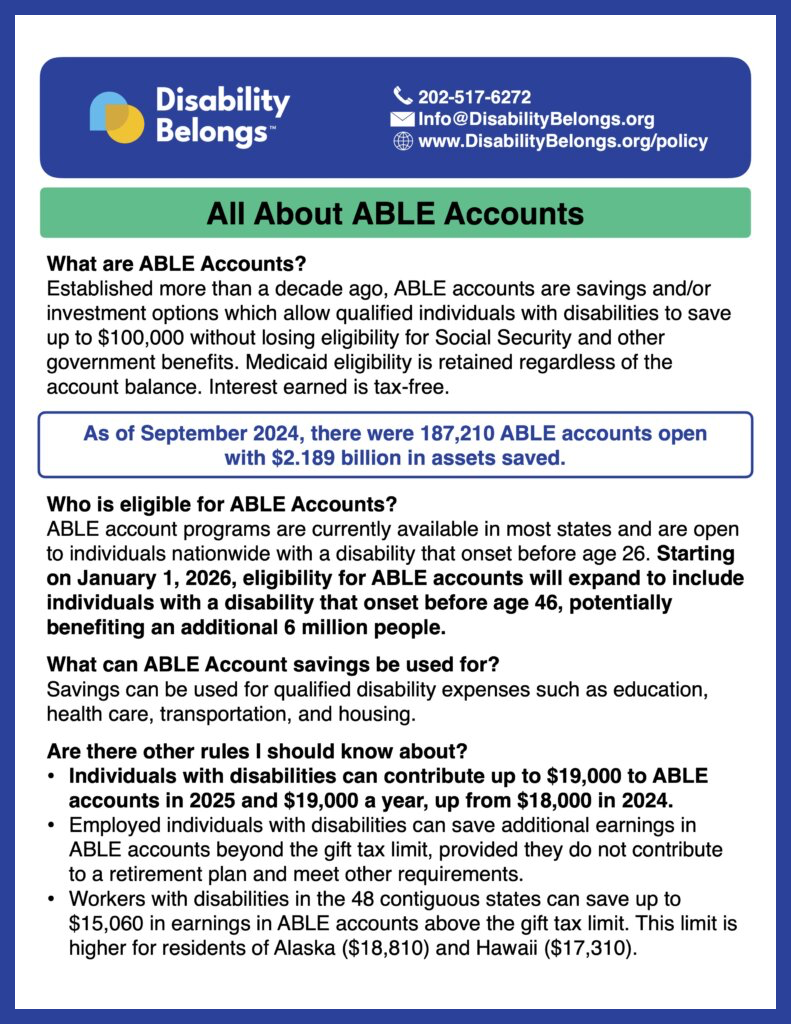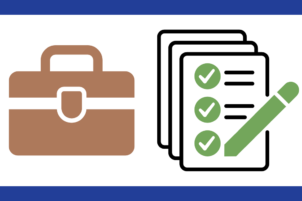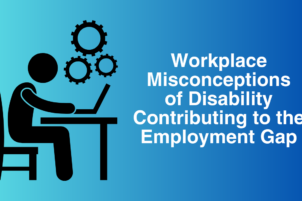What are ABLE Accounts?
Established more than a decade ago, ABLE accounts are savings and/or investment options which allow qualified individuals with disabilities to save up to $100,000 without losing eligibility for Social Security and other government benefits. Medicaid eligibility is retained regardless of the account balance. Interest earned is tax-free.
As of September 2024, there were 187,210 ABLE accounts open with $2.189 billion in assets saved.
Who is eligible for ABLE Accounts?
ABLE account programs are currently available in most states and are open to individuals nationwide with a disability that onset before age 26. Starting on January 1, 2026, eligibility for ABLE accounts will expand to include individuals with a disability that onset before age 46, potentially benefiting an additional 6 million people.
What can ABLE Account savings be used for?
Savings can be used for qualified disability expenses such as education, health care, transportation, and housing.
Are there other rules I should know about?
- Individuals with disabilities can contribute up to $19,000 to ABLE accounts in 2025 and $19,000 a year, up from $18,000 in 2024.
- Employed individuals with disabilities can save additional earnings in ABLE accounts beyond the gift tax limit, provided they do not contribute to a retirement plan and meet other requirements.
- Workers with disabilities in the 48 contiguous states can save up to $15,060 in earnings in ABLE accounts above the gift tax limit. This limit is higher for residents of Alaska ($18,810) and Hawaii ($17,310).







